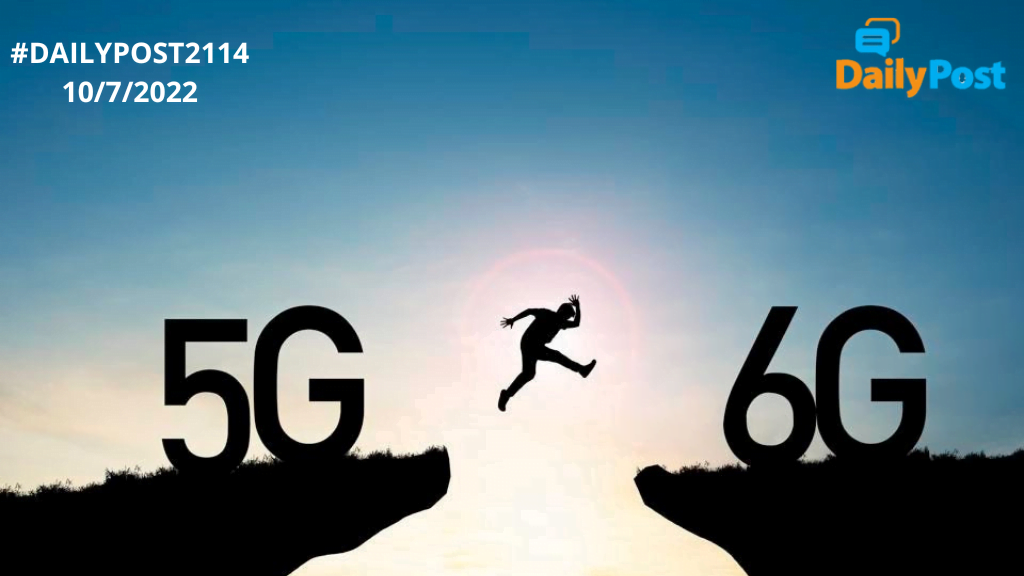DailyPost 2114
6G
Thinking ahead of time is technology, has been proven again and again. We in India keep struggling with proven technologies. Proving the value add in technologies have been a losing battle for quite sometime now. If you cannot create, be the best implementers and executioners and the country would remember you for all times to come. This has been our technological tragedy and slowly been turning out to be our technological nemesis, in more ways than one. The all-pervasive impact of technology in any area through our persistent effort and conspicuous result thereof is more as an exception than as a rule, may it be the private or the public sector and more so the government. We are still stuck in the 5G spectrum auction, while the leading players globally have taken giant strides.
Pre Covid-19 5G competition had already been hitting the international headlines and actions good, bad and the ugly were being taken to stifle competition. China had already taken a lead of over 18 months then, what it the present lag is difficult to comment. Nonetheless, mobile operators the world over are accelerating their rollout of the flexible, low latency, multi-gigabit-per-second communications network known as per 5G. While it is in a nascent stage at least for the users, MIT Technology Review has started talking about 6G. Will we be missing the tech revolution bandwagons persistently to be exploited only as users. No country can find its place in the sun without highest end cutting edge tech research and development.
MIT Technology Review is of the view that flexibility is the key when navigating the future of 6G. The timeline is 2030 and that battle has already begun, would give you a fair idea of the gestation period and complex road ahead, if one intends to take the arduous path. ”The paradigm shift ushered in by 6G will require innovating testing approaches that can adapt to the evolving definition of “next-next-generation.” What does this technology promise; it is not just faster data, but a more flexible and programmable network. It will benefit industries beyond traditional smartphone use models like manufacturing, transportation and healthcare. The difference between 5G and 6G is not only of bandwidth but the intelligence built into networks and devices. ”6G must work differently for an augmented reality headset than for an email client on a mobile device.”
How can different wireless technologies work together, so that they can hand off to each other. The challenges faced by communication providers to solve a plethora of technical challenges to make a variety of networks based on different technologies works seamlessly falls within the gamut of 6G research. Devices would need to have an intelligence of a different kind. 6G would usher in a self-aware network capable of supporting and facilitating emerging technologies. AI / ML would be architected into it to optimize radio signals and efficiently handle data traffic. Radios would learn from each other and from the environments. Testing would be at the core of it. What spectrum could be used would be based on tech, environment, cost, project timelines and few other reasons. Sub-terahertz spectrum for communication also needs to be investigated. Simulation and beyond, the use of digital twins would cut down on the iterative time considerably. The definition of 6G is fluid as of now; time and R&D would decide its format, upscaling and its all-pervasive use.
WHAT YOU CAN IMAGINE IS TECH TODAY. MOONSHOTS WILL WIN THE WORLD.
Sanjay Sahay

